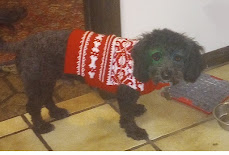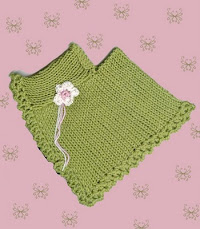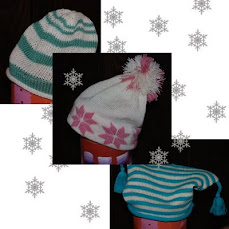If you remember, I was trying my hand at converting zentangle art to a knitting pattern using DAK. (See previous post for tips.) I finally managed to produce something. I seem to enjoy the fooling around with the computer as much as the actual knitting.
Learned a little along the way. One tip is this: after you download your (free) zentangle design and open it in Paint, go "save as" and when it gives you the option of different file formats, choose monochrome bitmap. It doesn't always completely convert it to black and white, but it does save some time in combining all the whites and blacks to 2 single colors. Ignore the "warning". Sometimes it works great. If you are proficient with another image processing program, use that. The second is the cardinal rule, which I ignored, is to do a swatch. A little arrogance, you know?? Not so much as to size but in my case whether the colors go together. I loved the colors each by themselves but am not so crazy about what they look like together. O well, was an experiment. Finally, I think the larger design elements show up better than little tiny details. But this may be just personal preference or this particular design. Now that it has been knit up, I can see some improvements that could have been made.
So, anyway, here's my experiment. I didn't want to do a time-consuming long scarf, so I opted for a cowl.
I wanted the cowl to be about 30 inches around and 10 inches high after hemming. In order to get the 30 inches, it had to be knit lengthwise. I used my Brother 970 standard gauge. My dimensions at a gauge of 7 st and 10 r at T9 were 140 ( 10 inches doubled) stitches x 300 rows. I didn't pay attention to whether any of the design matched anywhere it was to be seamed. I did knit a few rows of waste yarn then plain rows at the beginning and end to make the kitchener stitching join easier than using the fairisle stitches. I decided I could put the join at the back of my neck so it wouldn't show.
Once off the machine I joined it into a tube with the kitchener stitch, then folded it in half to make it double, thus hiding the many long floats. I seamed with a mattress stitch. I was careful to not skew the edges. I didn't find the long floats an issue, but I suppose you could deal with them as you are knitting if they bother you. They are hidden anyway, and when you block the knitting, the stitches stay put. Maybe if you were using a silky yarn, the stitches would not stay put. I put the seam in the middle so that it wouldn't be visible, then steamed it aggressively.
Was a fun and fast project. I think I'll do more. I have amassed about 30 designs to keep me out of trouble for a good long while. As always, write to me if you need help converting the design in DAK or any other issue.
April 1st! Yea, spring is arriving. We had a terrible winter, so the milder temps are really welcome.
machine knitting midgauge standard bulky machknit knit machine-knit patterns
Monday, April 1, 2019
Subscribe to:
Comments (Atom)




































































